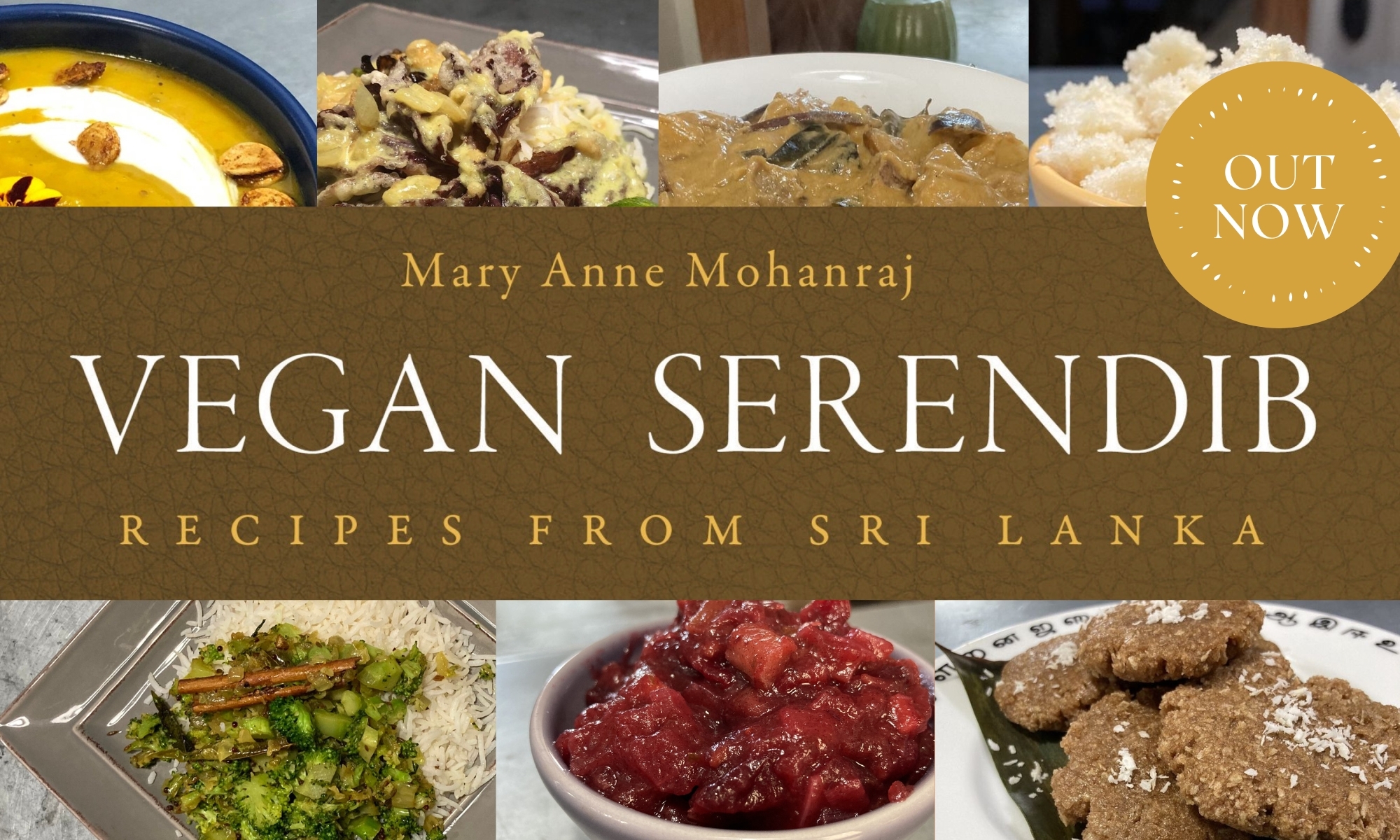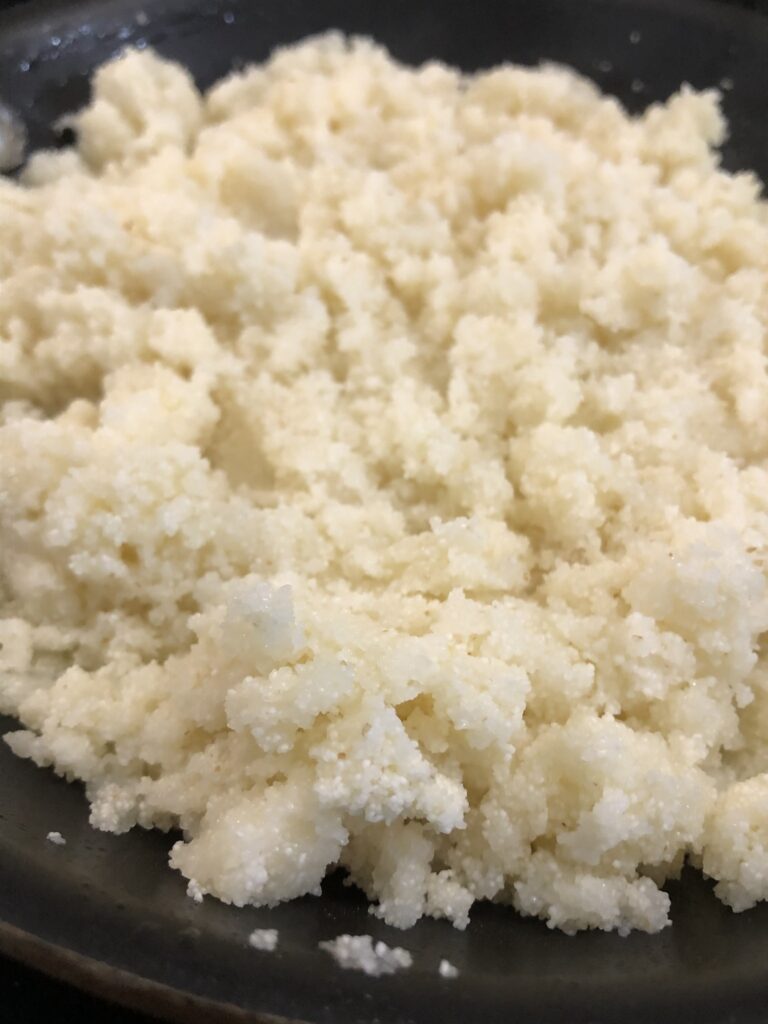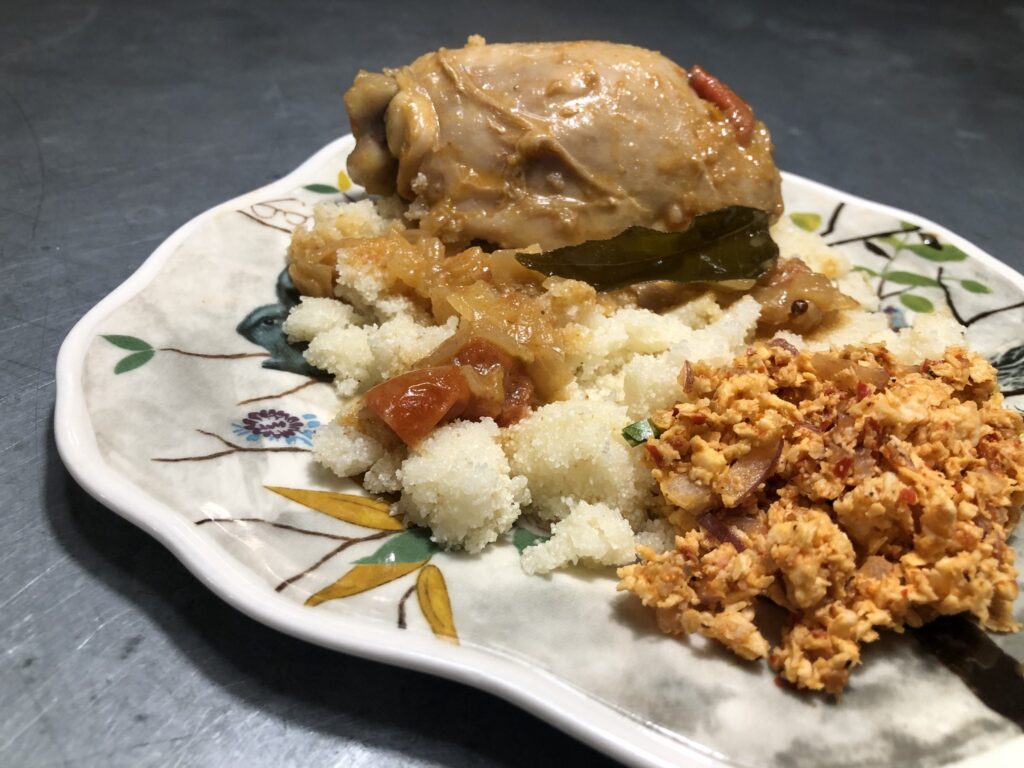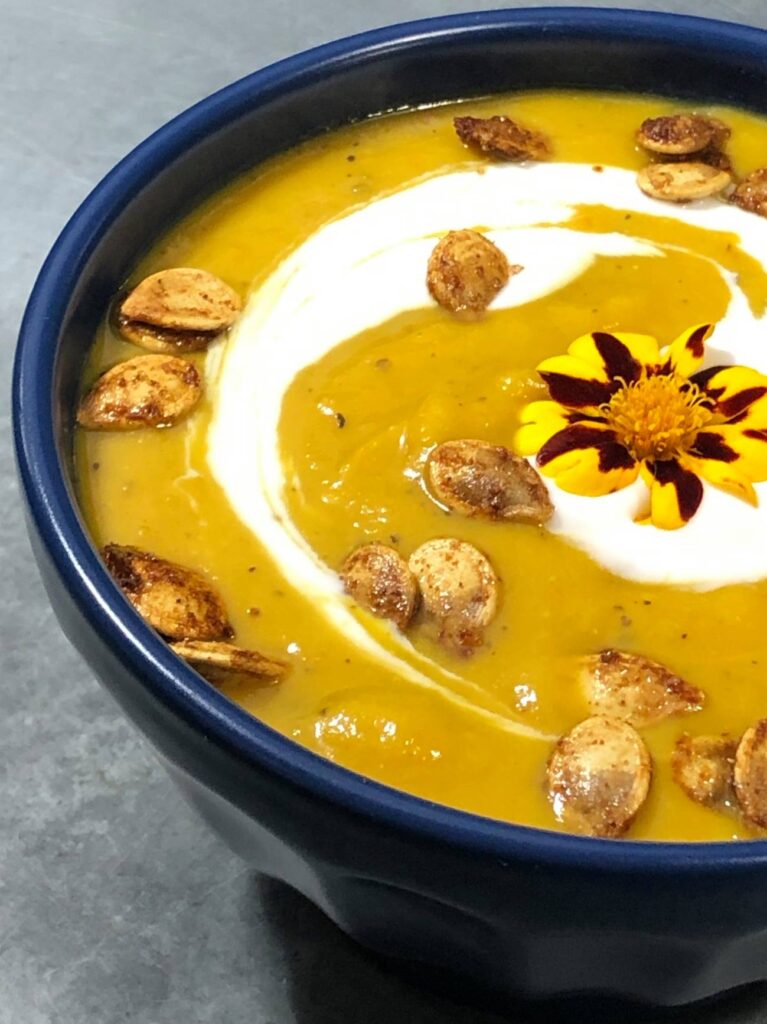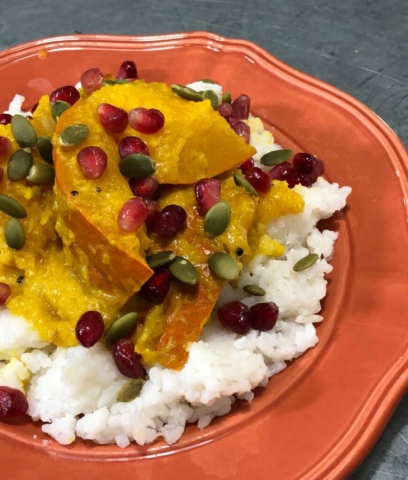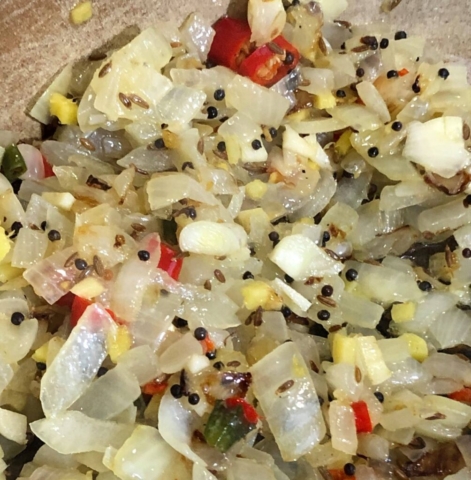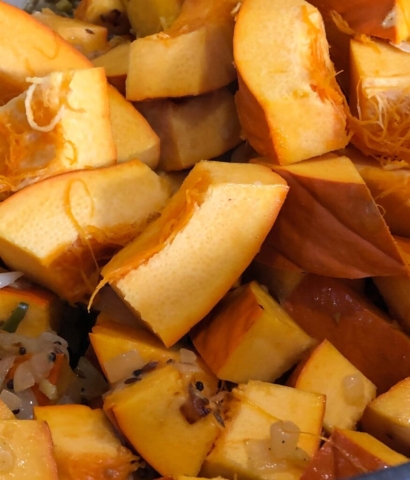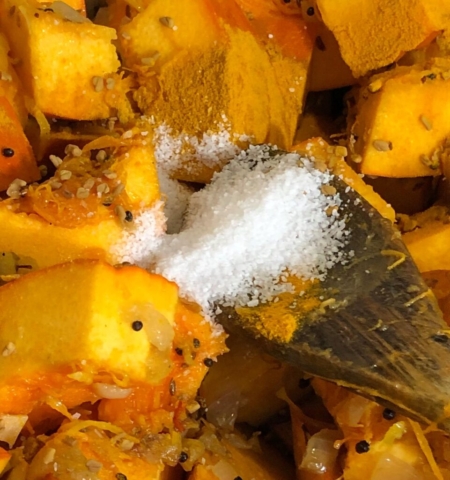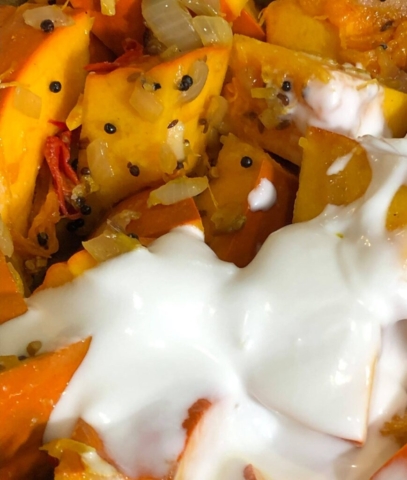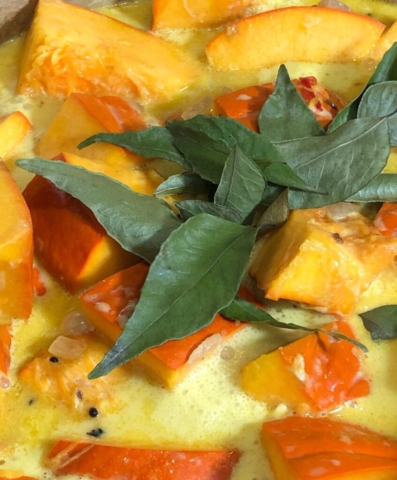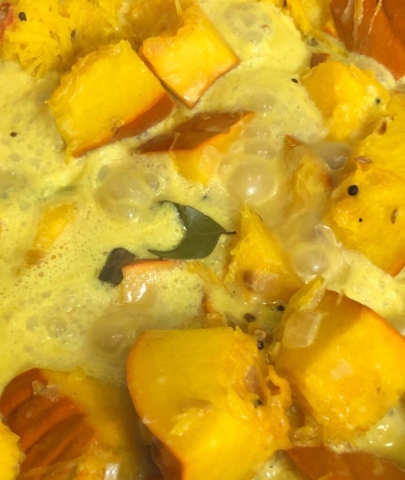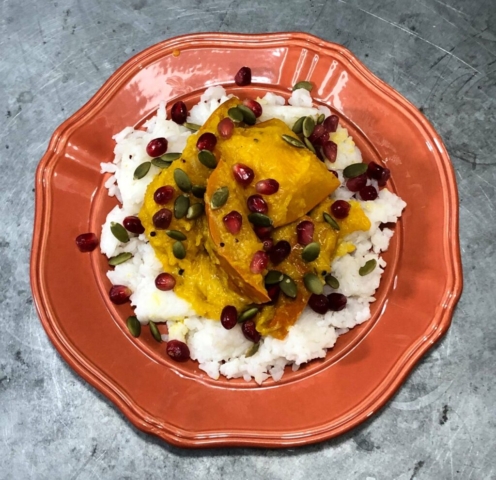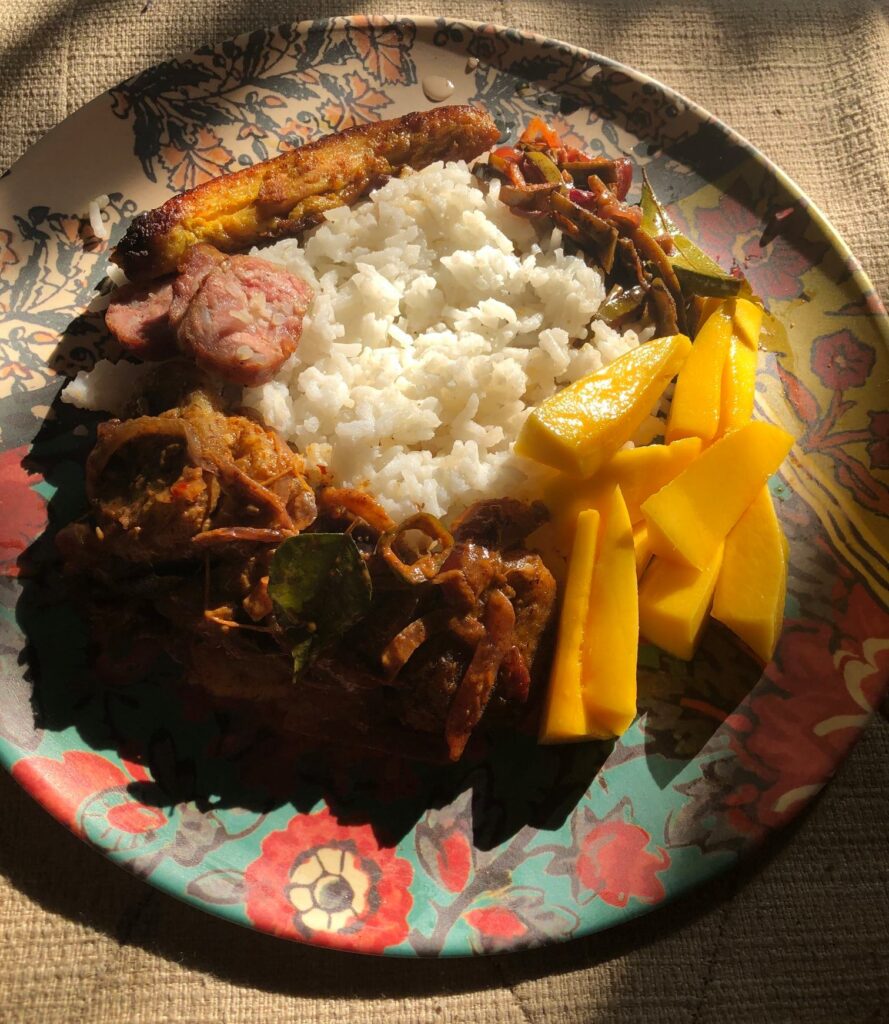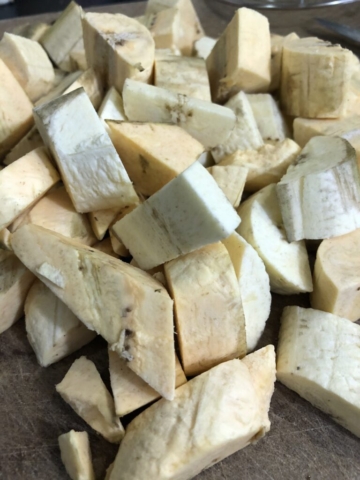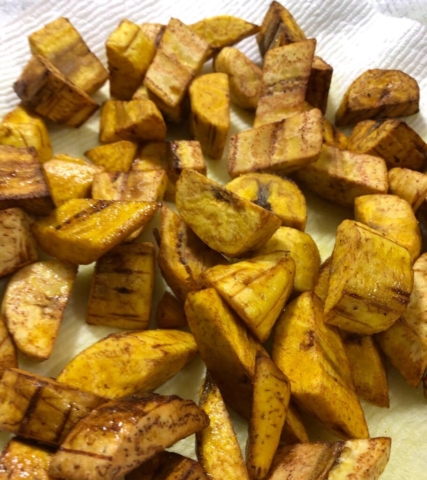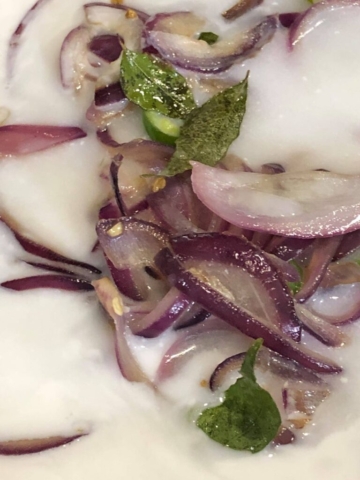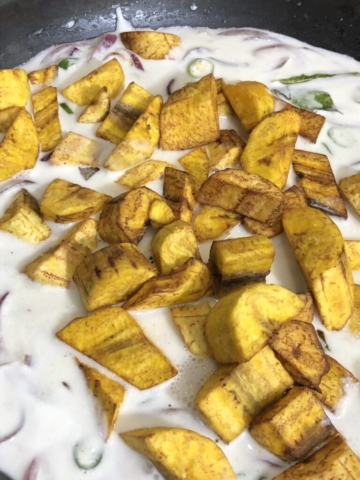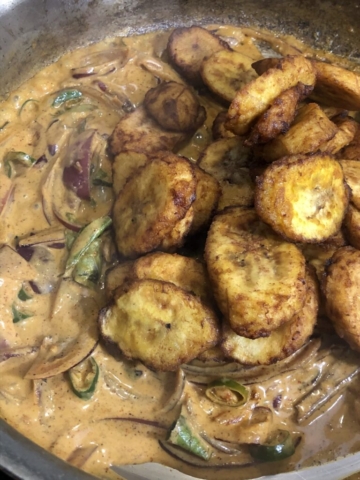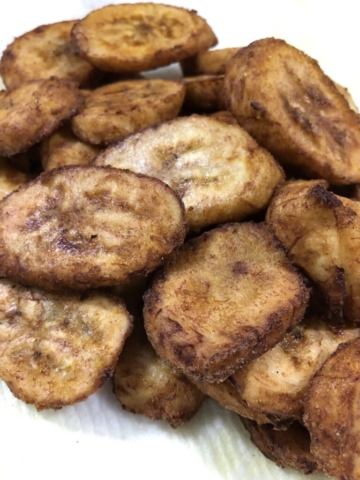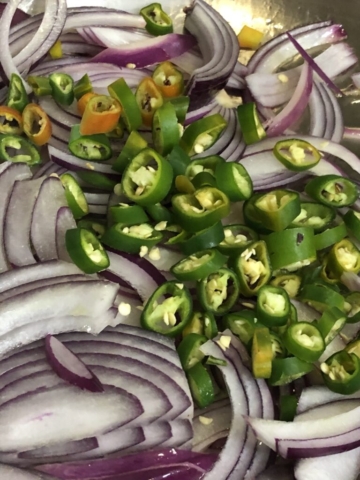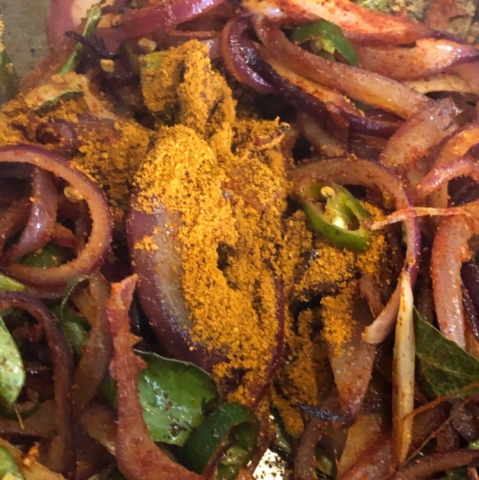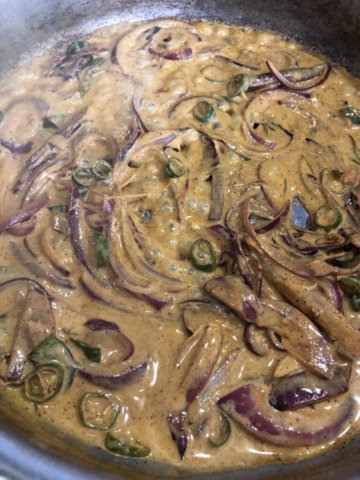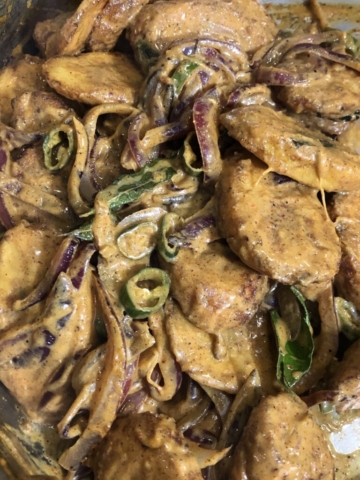The orange pumpkins that are so familiar in America don’t actually grow in Sri Lanka, but the same approach used for Sri Lankan ash pumpkins (also known as wintermelon) works well for orange pumpkins too, offering a mild, comforting curry rich in autumn flavor,
Typically in Sri Lanka, you’d leave the pumpkin skin on for cooking, and it can then either be eaten, or removed easily with your fingers. But if you’re eating with a fork instead of your clean hand, that may be a little tricky to manage — feel free to peel your pumpkin if you like.
One key to this curry is to cut the pumpkin into different sized chunks, so that the smaller pumpkin pieces dissolve into a curry sauce, and the larger ones stay in soft pieces.
I used a medium-sized five pound pumpkin for this dish, but you can certainly reduce the quantity — just reduce the onions and other spices roughly proportionately. But one nice aspect of making a big pumpkin curry, is that after you’ve eaten it for a day or two, any leftovers can be put on the stove, some broth added, and cooked down into a lovely soup. The soup also freezes well.
1/4 c. vegetable oil
5 onions, chopped
3-5 T ginger, chopped
5-10 cloves of garlic, chopped
3-5 fresh green or red chilies, chopped (optional)
1 1/2 t. mustard seed
1 1/2 t. cumin seed
1 t. fenugreek seed
1/2 t. turmeric
1 t. salt
2 stalks curry leaves (about 18-24 leaves)
1 medium pumpkin, about five pounds, cut into chunks (peeled if you like)
2 c. coconut milk + 2 c. water
pomegranate and pumpkin seeds for garnish, optional
1. Heat oil in a large pot and sauté onions, ginger, garlic, chilies, and spices over medium heat, stirring, until onions are golden-translucent.
2. Add pumpkin, curry leaves, coconut milk and water; bring to a boil, then turn down to a simmer.
